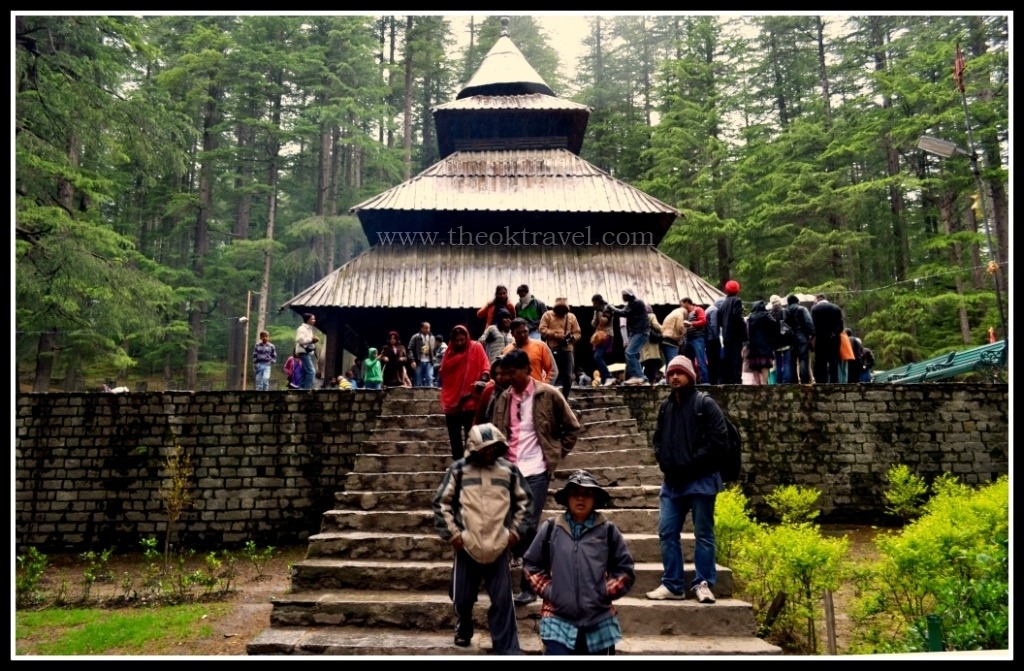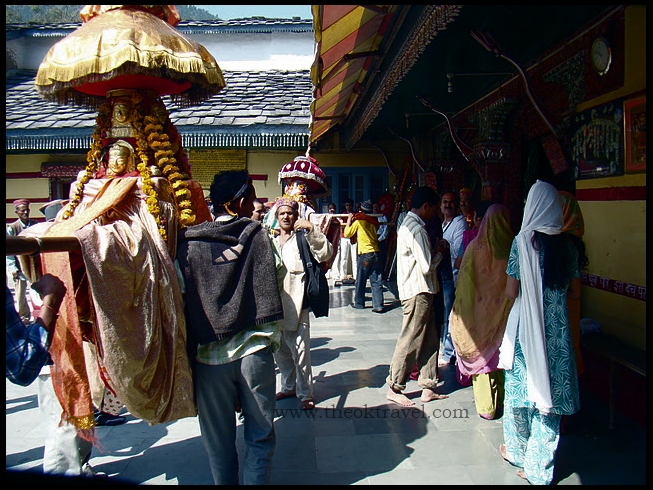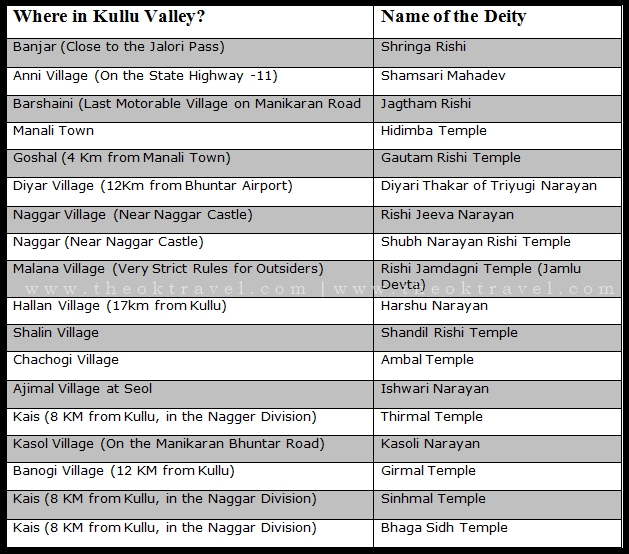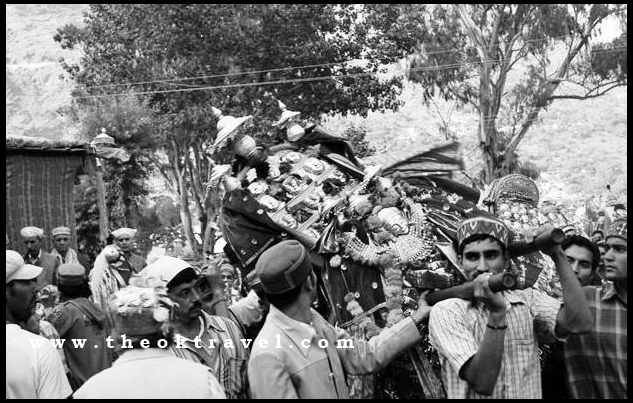Regional folklore traces history of Kullu-Manali to ‘the great flood’ when all civilization perished. The legend goes that Manu’s boat, the only clan to survive the great flood (reminiscent of the biblical Noah’s Ark) struck land at Manali (literally meaning residence of Manu) and the human race flourished again.
Born to glacial waters around Rohtang Pass, the Beas river for
the 80 Km stretch through wild mountains tempered by an occasional cultivated slope has been host to a people who have worshiped the elements manifest in Devtas (village deities). These Devtas residing in practically every village can in turn be benign, angry and capricious. The river itself is said to derive its name from the great Rishi Vyas.
A temple dedicated to Hadimba, wife to Bhim (one the Pandav princes in the Mahabharata tale) at Manali is perhaps the only one of its kind in the country. Hadimba Devi happens to be the presiding deity of the royal house of Kullu.


Rishi Vyas, the legendary author of the Mahabharata epic and sage Vashist are said to have meditated on the banks of Beas in Kullu valley and contributed to the growth of Indian philosophy.
Accounts of the famous Chinese traveler Heiun-Tsang record him having visited Kullu valley in circa 7th AD.
Today there are 18 major deities across the Kullu District, which are popularly called as ‘Tharah Kardu’, which is a term used to describe all the 18 major deities of the Kullu Valley. ‘Tharah’ is a pahari word which means Eighteen, where as ‘Karadu’ means basket. The word ‘Karadu’ is derived from the Sanskrit word ‘Karand’ which means a basket made of bamboo.
The legend says that Saint Jamadagni, while returning from his ‘Kailash Pilgrimage’ carried images of eighteen different gods with him in a basket. However, he met a demon called ‘Banasur’ on his way back to the Kullu Valley at the Chander Khani Pass near modern age Malana Village. The sage lost control of his basket and all the 18 images were scattered throughout the Kullu Valley. There are several other stories related to the magical figure of ‘eighteen’.
Tharah Karadu are also known as ‘Tharah Narayan’ where Narayan, stands for Lord Vishnu who is worshiped as God across the country. Experts have interpreted the word ‘Tharah’ in several ways, mainly as an auspicious number.
‘Tharah Kardu’ of the Kullu Valley belong to different parts of the valley. The table below shows which part of the Kullu Valley each of these Eighteen Deities represent.

Each village has its own god and the form of worshiping God is unique in every village. Some villages even have more than one God or Goddess. Unlike other temples, these Gods are devoid of any statues and these gods and deities act as moving beings.
Each God is carried upon a palanquin, which is adorned with colorful clothes and is studded with metallic faces of Gods and Deities. A group of men lift these palanquins on their shoulders and women are not allowed to lift these palanquins. Attendants, musicians, priests accompany these palanquins whenever they are moved out of the village or the temple.

These Gods show their emotions through these palanquins. It is believed that these Gods show every human emotion and they speak as well through the medium of the priest, which is called ‘Guurr’ in the native language.
Gods of the Kullu Valley or rather the Himalayan State of Himachal Pradesh can be divided into three different categories namely Ancient Saints (Rishis) and Female Deities, Nagas (Serpents), and local heroes and tribal leaders.
Kullu is a land of culture, religion, and folklore. There are hundreds of stories hidden behind the mountains and valleys of Kullu.
A visit is a must. And just one visit is not enough.

Interesting and informative write-up!
Glad you liked it, Dr. Saroj.
Great!!! Exploring Kullu!!! Thanks alot….